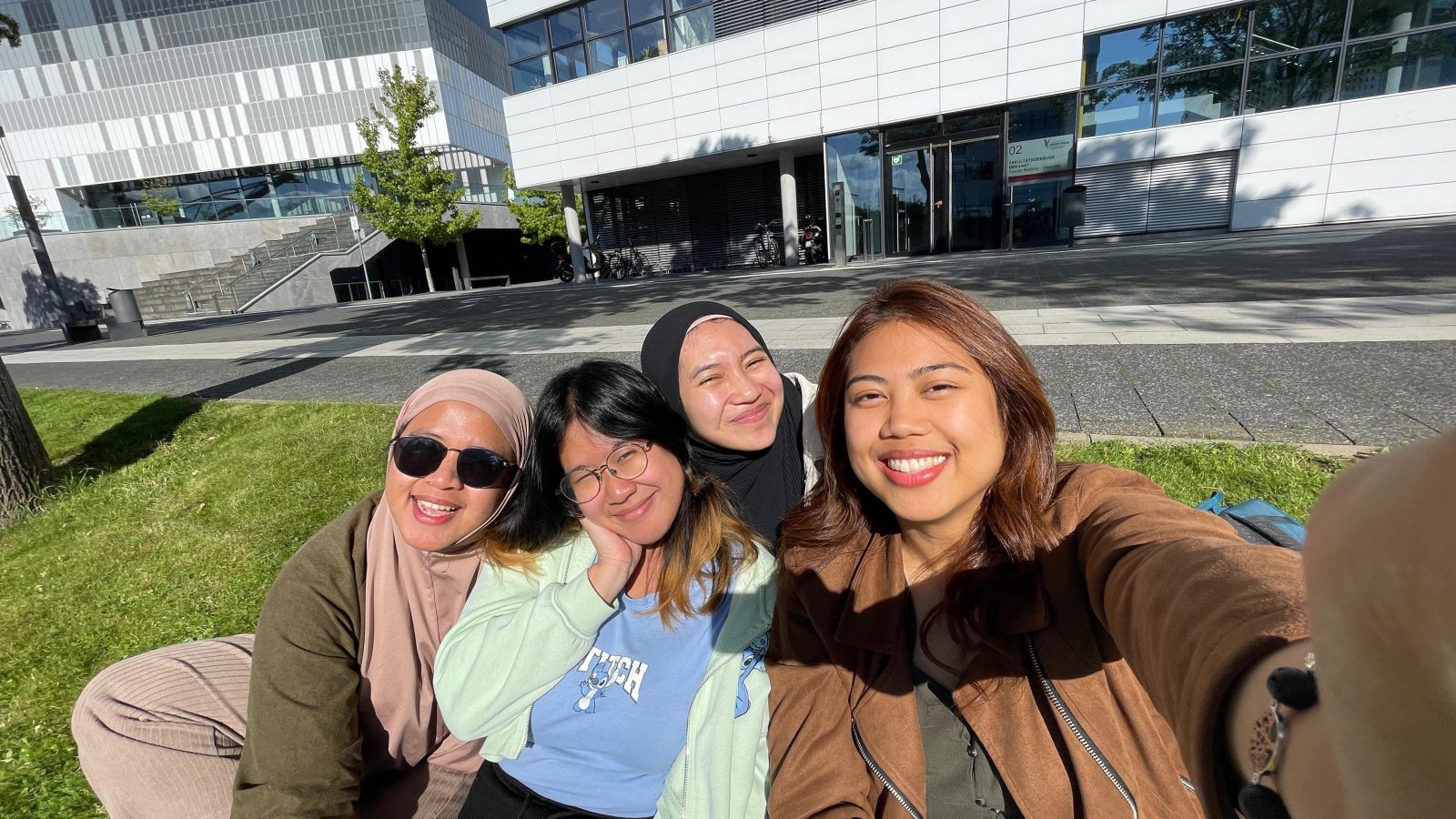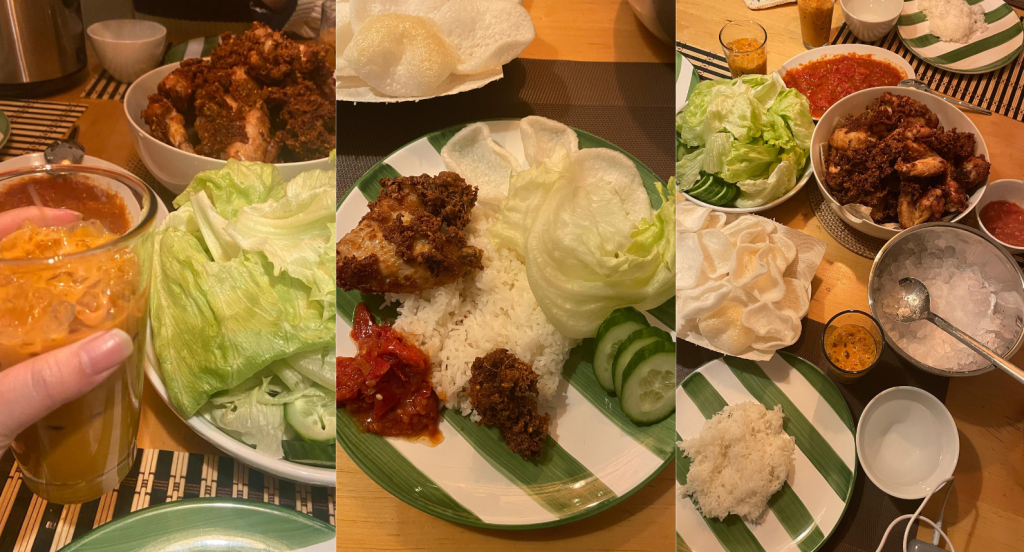
Approaching the second year living far away from home, Diaspora Youth Intern Nicha reflects on her new-found regional identity and how her diasporic experience and exposure to other Southeast Asian fellows contribute to that discovery.
“I am Southeast Asian” – What a strange phrase!
When I first became a Thai student abroad, my focus was on adapting to a new country and seeking new opportunities not on discovering my own identity, neither national nor regional. When I decided to move to Germany, I did not expect to gain anything except academic and professional advancement and perhaps a little sprinkle of German language proficiency. But one day, while I was making Ayam Goreng (fried chicken) and Cha Yen (Iced Thai tea) with my Indonesian and Malaysian friends, I realised how easily the phrase “I am Southeast Asian” or “We are Southeast Asian” slipped through my mouth. These phrases were strange for me to say back in Thailand.
I grew up with the motto “Unity in Diversity” promoted by the Association of Southeast Asian Nations (ASEAN) and was taught about other member states in school for years, yet I never fully embraced the idea of being Southeast Asian until I left the region.
I have found it mesmerizing to start to have such feelings when living more than 10,000 kilometers away from the region, doing such ordinary things as cooking, eating (passionately!), and laughing with my new friends.
Why did I never feel like this back in Thailand? And how did my diasporic experience as an international student foster my sense of belonging towards Southeast Asia? Curious to understand this shift, I asked my fellow Southeast Asian students if they ever felt the same.
What is ASEAN/Southeast Asian identity?
Before sharing our discussion with you, it is crucial first to provide a brief background on the ASEAN regional identity-making endeavor and its challenges…
In 2015, the ASEAN Community was officially launched to establish a people-centred ASEAN of “One Vision. One Identity. One Community.” by 2025. Ten years have passed, and I am still questioning what “One Identity” truly means given the diverse political, economic, cultural, and religious backgrounds of Southeast Asian nations.
Officially adopted by the 37th ASEAN Summit in 2020, ASEAN identity refers to “a process of social construct defined by [a] balanced combination of constructed values and inherited values that will strengthen the ASEAN Community.”
- Constructed values are deliberately developed and followed by the member states to maintain the region’s peace, unity, and prosperity. These values – known as the “ASEAN Way” principles – include consensus, non-interference and unity in diversity.
- Inherited values are developed through the process of inter-ethnic and cultural exchanges among Southeast Asian people throughout history, facilitated by migration, trading activities, and external influences from foreign cultures, namely China, India, the Middle East, and Europe.
This mixture of internal and external influences has led to a pluralistic regional community with shared heritages. It demonstrates adaptability, resilience, and respect for diversity, as reflected by common values of collectivism, kinship, tolerance, and many more.
The ASEAN identity thus represents a shared vision to create a secure and stable regional community. It values diversity while fostering unity and respecting each member’s sovereignty. To date, ASEAN has launched a number of initiatives to build this regional identity, such as adding ASEAN-related subjects to the school curriculum and establishing the ASEAN People’s Congress and People’s Forum, though access to the general public is limited. However, several challenges remain in fostering awareness and appreciation of being part of the ASEAN community among the public. These include lack of trust, internal and external disputes and disparity in development between countries.
Ironically, despite the ambition to be a people-centred community, most of ASEAN’s regional identity-making efforts remain top-down, with limited meaningful participation from the general population. Personally, even though I learned about other member states at school, I rarely got a chance to interact with their people, and did not learn to see my regional neighbours as being from the same community. For me, the ASEAN identity remained a vague political concept with little connection to ordinary people until I moved to Germany and found my Southeast Asian community.
Discovering Southeast Asian identity together
Curious about whether others had similar experiences, I sat down with three Southeast Asian friends – Dhisa and Dini from Indonesia, and Alexandra (Lala) from Malaysia – to discuss how moving abroad shaped our regional identity. I asked them the same questions I had asked myself: whether they had ever identified themselves as a “Southeast Asian” while living in their home countries and whether moving to Germany had made them more aware of their Southeast Asian identity. We also reflected on what “ASEAN Identity” means to us and how it connects to our sense of community and regional development. Here are the key takeaways from our discussion:
Limited regional awareness back home
We unanimously agreed that we rarely identified ourselves as “Southeast Asian” while we were living in our home countries, nor were we much aware of the government’s effort to foster ASEAN identity among the public. Even though we were well-informed about the existence of a high-level meeting such as the ASEAN Summit, we felt little to no connection to its subsequent action, particularly in terms of building the people-centred ASEAN Community and ASEAN Identity.
Cultural connection abroad
Moving to Germany and forming this tight-knit group of Southeast Asians strengthened our regional identity: As we got closer, we gradually realised that we have much in common despite coming from different countries and having unique religious, cultural, and historical backgrounds.
We have the same daily craving for rice and share the same level of passion for food and karaoke. We instinctively follow the same tradition of hospitality, always preparing an abundance of food – because there is no such thing as too much food – and making sure that no one is left hungry. We empathise deeply with each other’s sadness and joy about stories from back home as we also experience similar family and social traditions.
Finding comfort in a shared journey
Beyond these shared behaviors, culture, and traditions, our shared experiences of moving abroad and trying to navigate an unfamiliar environment foster our sense of community. Amidst the challenges of adapting to a new society, this small circle of Southeast Asian friends becomes a safe space, offering both the support of those who share the same diasporic journey and the comfort of familiarity.
Celebrating diversity and reinforcing identity
As much as we are excited to explore our commonalities, we are equally eager to learn about our differences, often exchanging bits and pieces of our home countries with one another. For example, while Indonesia and Malaysia share almost the same local dishes, it is always fascinating to see Dhisa, Dini, and Lala discussing how they cook them differently.
This safe space not only fosters our regional bond but also reconnects us with our national identities. It reinforces pride in our regional and national heritages and eagerness to share them with our friends from other regions. These simple everyday interactions unexpectedly bring ASEAN’s value of “Unity in Diversity” to life in a way that no official document ever could.
Our “ASEAN identity,” our “ASEAN community”
Beyond shared heritage and principles, the ASEAN Identity is also rooted in the essence of being one community, where members have each other’s back, just like how we support each other here in Germany. In other words, regional identity is built not only on shared values but also on the commitment and concrete actions of the Member States to ensure inclusive and sustainable regional development. Among those actions, of course, should include the bottom-up approach in which Southeast Asian citizens have more opportunities for exposure and interaction with one another, thus strengthening and sustaining the ASEAN community in the long run.
What about you?
After doing both self- and group reflection, I can now answer my own questions from the beginning: Despite ASEAN’s efforts to promote regional identity, the lack of direct and consistent interaction among general citizens from different member states makes the concept of “ASEAN Identity” feel abstract. However, our diasporic journey as international students living abroad has given us a unique opportunity to discover this regional identity more personally and meaningfully.
Through ordinary interactions such as cooking, sharing meals, and supporting each other, we discovered our commonalities, celebrated our differences, and deepened our sense of belonging to Southeast Asia. Our regional identity has become more tangible regardless of where we live. This experience thus highlights not only the crucial role of direct, people-to-people interactions in strengthening the sense of regional community but also reflects potentials of diaspora to be a part of the regional identity-making endeavor.
What about you? Have you felt the same as us, (re)connecting with your regional identity through your diasporic journey?

Krupuk (Shrimp cracker), Khao Hom Mali (Thai Jasmine rice) and Cha Yen (Iced Thai tea)